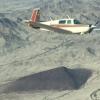At Home - Oil and IFR Questions
-
Members Online
- cmck
- haymak3r
- bennd56
- IvanP
- N201MKTurbo
- Wingfree
- Fly Boomer
- Shadrach
- DanM20C
- CCAS
- Pinecone
- slowflyin
- Grant_Waite
- skykrawler
- Ivan
- Minivation
- sdmideas
- BlueSky247
- Utah20Gflyer
- bigmo
- dkkim73
- tony
- MrFritz
- WillyT
- Ragsf15e
- Paul Thomas
- DonMuncy
- dzeleski
- MatthiasArnold
- Schllc
- 00-Negative
- NickG
- Slick Nick
- MikeOH
- Hector
- kortopates
- lanejacobs84


Recommended Posts
Join the conversation
You can post now and register later. If you have an account, sign in now to post with your account.